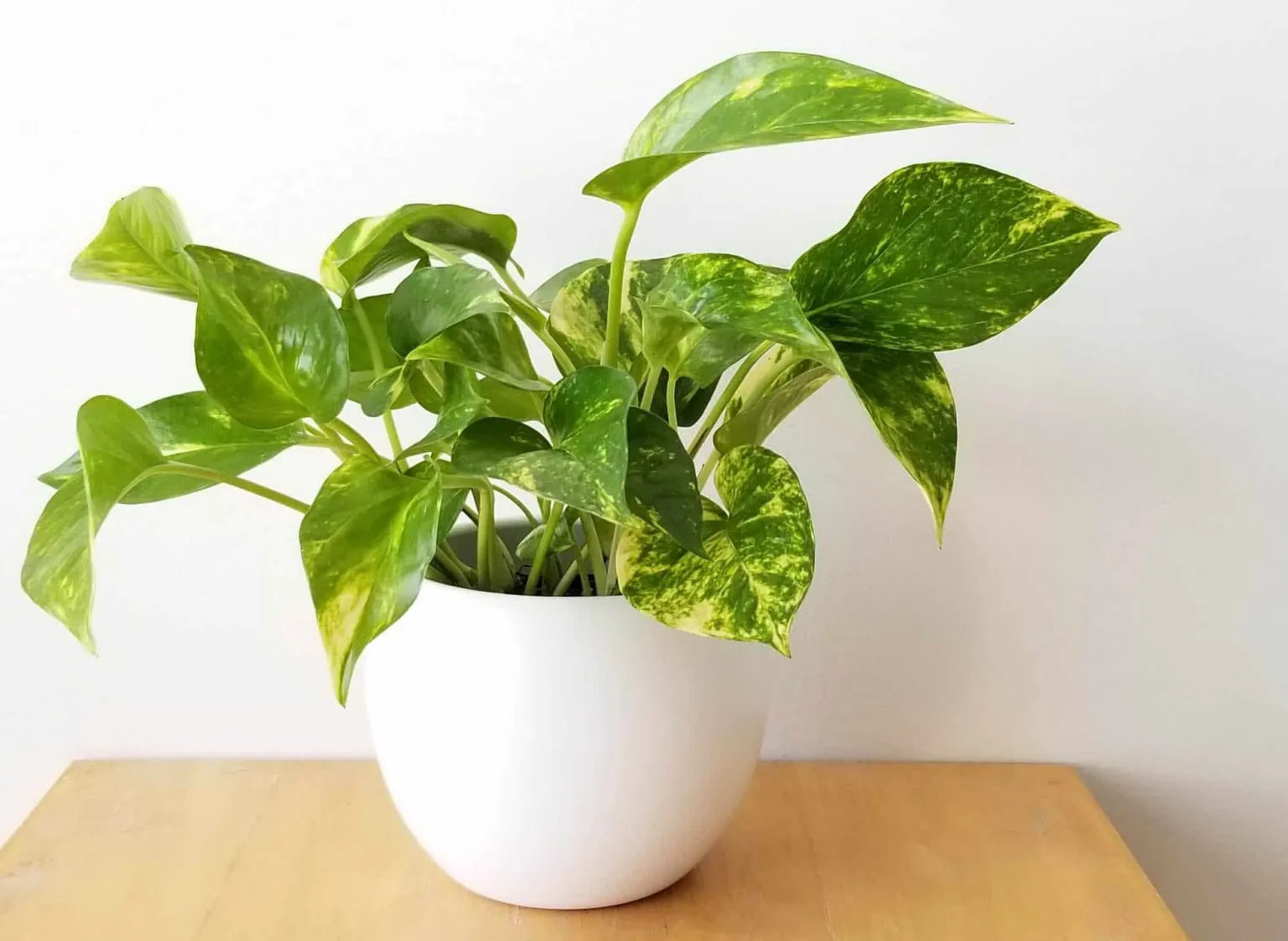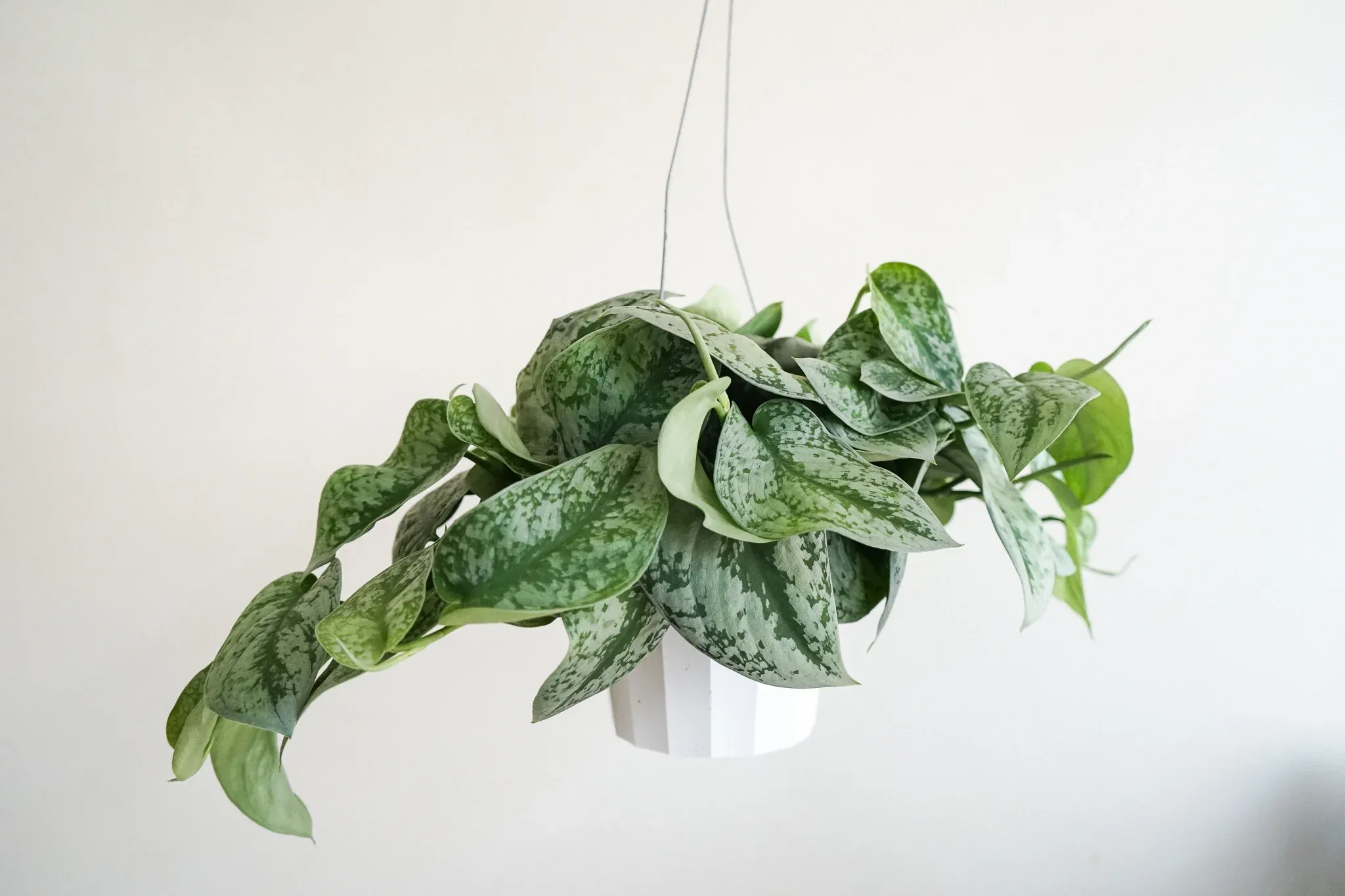N'Joy Pothos (Epipremnum aureum 'N'Joy') is a popular houseplant known for its striking variegated foliage and ease of care. This variety of pothos is distinguished by its green and white leaves, which can brighten up any indoor space. In this comprehensive guide, we will explore everything you need to know about growing and caring for N Joy Pothos, from its origins and natural habitat to detailed care instructions and propagation tips. N Joy Pothos is a cultivar of the Epipremnum aureum species, commonly known as pothos or devil's ivy. This species is native to the Solomon Islands in the South Pacific. Pothos plants thrive in tropical environments, where they grow as ground cover or climb trees, benefiting from the humid conditions and dappled sunlight of their natural habitat. N Joy Pothos thrives in bright, indirect light. While it can tolerate lower light conditions, the variegation may become less pronounced if the plant doesn't receive enough light. Direct sunlight should be avoided as it can scorch the leaves. An ideal spot would be near a north or east-facing window where the plant can receive ample light without direct exposure. Select a pot with adequate drainage holes to prevent waterlogging. A pot that is slightly larger than the current root ball of the plant will allow room for growth without causing excessive moisture retention. A well-draining potting mix is essential for N Joy Pothos. A standard indoor plant potting mix works well, but you can also add perlite or orchid bark to improve drainage. Ensuring that the soil drains well helps prevent root rot, which can be a common issue if the plant is overwatered. Watering needs for N Joy Pothos are moderate. The plant prefers the soil to dry out slightly between waterings. Overwatering can lead to root rot, so it's crucial to let the top inch of soil dry out before watering again. During the growing season (spring and summer), you may need to water more frequently, while in the dormant period (fall and winter), watering can be reduced. N Joy Pothos thrives in temperatures between 65°F and 85°F (18°C to 29°C). It prefers high humidity but can adapt to lower humidity levels typical of indoor environments. To boost humidity, you can place a humidifier nearby, use a pebble tray, or mist the plant occasionally. Fertilizing N Joy Pothos helps promote healthy growth and vibrant foliage. Use a balanced, water-soluble fertilizer diluted to half strength every 4-6 weeks during the growing season. Avoid fertilizing during the dormant period in winter, as the plant's growth slows down. Regular pruning helps maintain the shape and size of your N Joy Pothos. Prune the plant to remove any dead or yellowing leaves and to encourage bushier growth. You can also trim back the vines if they become too long or leggy. Use clean, sharp scissors or pruning shears to make clean cuts just above a leaf node. There are two main methods for propagating your N'Joy Pothos: water propagation and soil propagation. Both are beginner-friendly and highly successful. pothos n joy should be repotted every 1-2 years, or when the plant becomes root-bound. Choose a pot that is one size larger than the current one and has drainage holes. Gently remove the plant from its old pot, loosen the roots, and place it in the new pot with fresh potting mix. Water the plant thoroughly after repotting. N'Joy Pothos is relatively resistant to pests and diseases, but it can occasionally be affected by spider mites, mealybugs, and scale. Inspect your plant regularly and treat any infestations promptly with insecticidal soap or neem oil. Overwatering can lead to root rot, so ensure proper watering practices and good drainage. Yellow leaves can indicate overwatering, underwatering, or nutrient deficiencies. Check the soil moisture and adjust watering practices accordingly. Ensure the plant is receiving adequate light and consider fertilizing if nutrient deficiency is suspected. Root rot is caused by prolonged exposure to waterlogged soil. To prevent root rot, ensure proper drainage and avoid overwatering. If root rot is detected, trim away affected roots and repot the plant in fresh, well-draining soil. Regularly inspect pothos n'joy plant for signs of pests like spider mites, mealybugs, and aphids. Treat infestations with insecticidal soap or neem oil and isolate the plant to prevent the spread to other houseplants. During winter, reduce watering frequency and avoid placing the plant near cold drafts or heaters. Maintain humidity levels and provide adequate light to prevent dormancy issues. In summer, increase watering and humidity to match the plant's active growth phase. Protect the plant from direct sunlight and ensure good air circulation to prevent heat stress. Gradually adjust care routines as seasons change to prevent shock. Monitor the plant's response and make incremental changes to watering, lighting, and humidity. Growing and caring for N'Joy Pothos can be a rewarding experience, bringing both aesthetic and health benefits to your indoor space. With its striking variegated leaves and low maintenance requirements, it is an excellent choice for both novice and experienced plant enthusiasts. By following the comprehensive guide provided, you can ensure your pothos n joy plant thrives and adds a touch of nature's beauty to your home.How to Grow and Care for N'Joy Pothos
Understanding N Joy Pothos
Origin and Natural Habitat
N Joy Pothos Care
Light Requirements
Pot Selection
Best Soil Mix
Water Requirements
Temperature and Humidity
Fertilizer
Pruning
Grow and Care for Hawaiian Pothos
Propagating Your pothos n'joy plant
What You'll Need:
Choosing Your Cutting:
Making the Cut:
Water Propagation:
Soil Propagation:
Potting and Repotting
Common Pests & Plant Diseases
Troubleshooting Common Problems
Yellowing Leaves
Root Rot
Pest Infestations
Seasonal Care Tips
Winter Care
Summer Care
Transitioning Between Seasons
Conclusion
Expert Guide to Grow and Care for N Joy Pothos
| Name | |
|---|---|
| Publisher | |
| Genre | Pothos |
| Version | |
| Update | July 29, 2024 |
| Get it On |

|









